Per l’aforista Ramon Gomez de la Serna, è vero che gli orgogliosi dicono < colonna vertebrale >, mentre i modesti dicono < spina dorsale >! I primi “s’ergono” diritti per vanto, i secondi trovano ostacoli ad ogni “asticella” da superare. Esther ha posato in piedi, ma quasi contorcendosi su una colonna (che non sostiene nulla). Lei tiene gli occhi chiusi; chissà quanto con aria sognante. Noi possiamo immaginare che le rovine monumentali siano “ovattate” dai ricordi per i giochi d’infanzia? Questo scatto ha per location l’Angelo Volante: una villa realizzata dall’architetto Gio Ponti, vicino a Parigi. Da bambini, virtualmente una delle prime visite era permessa, e gratuitamente, dal… nascondino! Ma quanto Esther qui avrebbe volato con le braccia? Più precisamente, le “scaglie” di marmo ad ornare la colonna sarebbero state afferrate dalle dita d’una mano, ricavandone una “freccia direzionale” (da destra a sinistra). Anche senza scomodare il pesce, vi percepiamo un ondeggiamento. Di sicuro, chi dorme non dà sfoggio di nulla!
According to the aphorist Ramon Gomez de la Serna, it is true that proud people say < vertebral column >, while the humble people say < backbone >! The first people “rise above” straight for boasting, the second people find obstacles in every “bar” that we have to raise. Esther posed standing, but almost contorting itself on a column (that does not support anything). She keeps the closed eyes; who knows how much with a dreamy air. Can we imagine that the monumental ruins are “muffled” by the memories for the children’s games? The location of this shot is the Flying Angel: a villa realized by the architect Gio Ponti, near Paris. As children, virtually one of the first visits was allowed, and for nothing, by the… hide-and-seek! But how much, here, would Esther have flown with the arms? More precisely, the marble “scales” that decorates the column would have been grabbed by the fingers of a hand, to gain their “directional arrow” (from the right to the left). Even without inconveniencing the fish, there we perceive a fluctuation. Certainly, somebody who sleeps does not show off anything!
(courtesy to Sarah Balhadere)
Per Andrea Cinardi, liricamente gli anarchici ballano al vento, sotto il cielo maculato d’una rivolta, e sopra la chitarra al canto d’una giornata che “strimpella”. Se gli idealismi sono “disorganizzati”, ciò avverrà da un’ispirazione al “divertimento”? Contro il temuto paradosso delle rivoluzioni che “si fossilizzino” sul nuovo potere, converrà tergiversare al < fate l’amore, non fate la guerra >? Le giornate strimpellano fra l’alba e la notte, di continuo. Questo sembra un “freno esistenzialistico” agli ideali… Martina è in posa sdraiata sul divano trapuntato, ed in modo “disordinato”. La gamba destra cavalca il lato del bracciolo. Il corpo scivola dallo schienale. O forse i pantaloni leopardati ci ricorderanno il proverbiale poltrire dei predatori nelle savane! La camicia annasperebbe in una propulsione, provando a far uscire il corpo da una “buca”. In tono giallo, quella ha una luminosità più secca che eccitante. Martina indossa una bandana, dai motivi maculati. Sulla destra, appoggiata al divano, appare una chitarra acustica. Esteticamente è uno scatto dal glamour un po’ anarcoide. Il maculato si percepisce a “strimpellare”, sull’abbottonarsi d’ogni “luce” idealisticamente “ispirante”. Nessuno potrà osare di vietare il (non)potere d’un canto libero (citando l’esatto titolo della sessione fotografica). Sarà qualcosa che spontaneamente piacerà a tutti, senza bisogno d’avanzare qualsivoglia “polemica”.
According to Andrea Cinardi, lyrically the anarchists dance in the wind, under the maculate sky of a revolt, and over the guitar to the song of a day which “strums”. If the idealisms are “disorganized”, will that happen from an inspiration to a “fun”? Against the feared paradox of the revolutions that “are fossilized” in a new power, would be convenient for us to tergiversate through a < make love not war >? The days strum between the dawn and the night, continually. That situation seems an “existentialist brake” on the ideals… Martina is posing lying on the quilted sofa, and in a “messy” way. The right leg rides the side with the armrest. The body slips from the backrest. Or rather the leopard-skin trousers will remember us the proverbial lounging of the predators in a savannah! The shirt would flounder in a propulsion, trying to allow the body as a “hole” to exit. That one, in a yellow tone, has a brightness more dry than exciting. Martina wears a bandana, in maculate motifs. On the right, leaning against the sofa, an acoustic guitar appears. Aesthetically this a shot with the glamour a bit anarchical. The maculate pattern is perceived able to “strum”, while every “light”, idealistically “inspiring”, buttons up itself. Nobody could dare to prohibit the (not)power of a free singing (mentioning the exact title for the photo session). That will be something that spontaneously will be appreciated by everybody, without the necessity of promoting whatever “polemic”.
(courtesy to Raffaele Auriti)
Per Jorge Carrera Andrade, il bacio scende dalla gola al cuore, e come l’acqua indispensabile per vivere da una fontana, mentre le carezze fremono al godimento dell’erba, dove appena spiritualmente soffia il vento. Lo scatto di Francesca è in bianconero. All’aperto, lei posa sul bordo in marmo d’una grande fontana. Lontano, la ringhiera potrà unicamente “scolare” il “rimbombo” delle chiome alberate. Questo scatto nel complesso cerca l’intimismo: noi non vediamo né il “barocchismo” dal getto della fontana, né il bel volto di Francesca (che è coperto dai lunghi capelli). Un abito dal design a “papille gustative” proverà a “sorseggiare” appena placidamente l’acqua. Dialetticamente, i capelli riprodurrebbero la forma d’un cuneo smussato ai suoi… “ventricoli”. Le gambe entrano realmente in acqua, causandovi una tenue fluttuazione. Gli stessi capelli si percepirebbero bagnati. Fuori dalla fontana, l’erba del giardino non sembra curata. In via intimistica, il “fulcro” dello scatto appartiene ai capelli, quantomeno da accarezzare.
According to Jorge Carrera Andrade, a kiss goes down from the throat to the heart, and like the water, indispensable to live, from a fountain, while the caresses tremble at the enjoyment of the grass, where the wind blows only spiritually. The Francesca’s shot is in black and white. Outdoors, she poses on the edge of marble of a large fountain. Far away, the railing could only “strain” a “rumble” from the crown of the trees. This shot overall looks for an intimism: we see neither a “baroque ornamentation” from the fountain’s spring, nor the beautiful face of Francesca (which is covered by the long hair). A dress with the design in “taste buds” will try to “sip” only placidly the water. Dialectically, the hair would reproduce the shape of a wedge “chamfered” in its… “ventricles”. The legs really enter the water, provoking there a feeble fluctuation. The same hair would be perceived wet. Out of the fountain, the grass of the garden does not seem looked after. In an intimate way, the “fulcrum” of the shot belongs to the hair, at least if we caress those.
(courtesy to Paolo Dirito)
In un Manifesto del Futurismo, esteticamente si ritiene che solo “l’immaginazione senza fili” permetta d’entrare nell’intimità della materia. Si conosce sempre per analogia. Tuttavia un conto è umanizzare l’esteriorità; ed un altro conto è esteriorizzare lo stile. La prima scelta apparirebbe fin troppo facile (autogiustificandosi); per la seconda servirà la “sensibilità” di venire incontro ad una trasformazione. L’analogia fenomenologicamente “prende” al balzo. Ma allora, per conoscere sul serio, bisognerà scavare. L’artista dotato di stile riuscirebbe a guidare il proprio contromovimento (come spiega Nietzsche). Ciò varrà pure a prescindere dai “fili” del realismo “ingenuo”. Così, per i Futuristi il simbolismo dell’arte potrà esteriorizzare i “nodi dei pensieri”, od i “ventagli dei movimenti”. Trattasi d’immagini che ci allenano a “scavare” il “filo appiattente” del realismo. Viola è stata messa in posa su uno sgabello. Il corpo cerca di rannicchiarsi. Le gambe s’incrociano a “ventaglio”, mentre le braccia a “cappio”. Questo scatto è per la maggiore bianco: fra lo sgabello ed il fondale. A noi piace immaginare che la mano sinistra a pugno si trasformi nella suola della scarpa col tacco, a fianco. E’ quella che gli scacchisti chiamerebbero una presa al passo! S’aggiunga che la composizione degli arti ha un dinamismo a mossa del cavallo, od almeno a cambio di marce. I Futuristi amavano la velocità; Viola potrebbe rallentarla grazie ad un volteggio, da ginnasta. Più astrattamente, tutte le linee di questo scatto (fra il corpo e lo sgabello) “giocherebbero” con le analogie del tangram.
In a Manifesto of Futurism, aesthetically they think that only a “wireless imagination” allows to enter the intimacy of the matter. We always know by analogy. However it is one thing if we humanize the exteriority; but it is another thing if we exteriorize the style. The first choice would appear all too easy (in their self-justification); for the second choice a “sensitivity” of meeting a transformation will be necessary. An analogy phenomenologically “seizes” the opportunity. So in that case, to really know, we will have to dig. An artist equipped with style would be able to drive the own countermovement (as Nietzsche explains). That situation will be valid also regardless of the “wires” of a naive realism. So, according to the Futurists the symbolism of the art could exteriorize the “knots of the thoughts”, or the “fans of the movements”. That is about the images which train us to “dig” a “flattened wire” of the realism. Viola was led to pose on a stool. The body tries to be curled-up. The legs are intersected in a “fan”, while the arms are intersected in a “noose”. This shot is principally white: between the stool and the backcloth. We like imagining that the left hand in a fist is transformed in the sole of the heeled shoe, alongside. That situation could be called by the chess-players as en passant! We add that the composition of the limbs has a dynamism with a knight’s move, or at least with a gear change. The Futurists loved the speed; Viola could brake it through a vault, as a gymnast. More abstractly, all the lines of this shot (between the body and the stool) would “play” with the analogies of the tangram.
(courtesy to Christian De Santi)
Bibliografia – Bibliography
CARRERA ANDRADE J., Obra poetica, Ediciones Acuario, Quito 2000, p. 134
CINARDI A., Fortezze, Lulu, Morrisville 2018, p. 40
GOMEZ DE LA SERNA R., Mille e una gregueria, Robin Edizioni, Roma 2002, p. 36
MARINETTI F.T., Collaudi futuristi, Guida, Napoli 1977, p. 91
VATTIMO G., Le avventure della differenza, Garzanti, Milano 2001, p. 110
Biografia – Biography
L’attrice e modella internazionale Esther Garrel nasce a Parigi (Francia) nel 1991.
The international model and actress Esther Garrel was born in Paris (France) in 1991.
https://it.wikipedia.org/wiki/Esther_Garrel
La fotografa Sarah Balhadere nasce a Montpellier (Francia).
The photographer Sarah Balhadere was born in Montpellier (France).
La modella italiana Martina Di Cola nasce ad Avezzano (AQ). Lei ha studiato Economia e commercio.
The Italian model Martina Di Cola was born in Avezzano (Province of L’Aquila). She studied Economics and commerce.
Il fotografo italiano Raffaele Auriti viene da Guardiagrele (CH). Specializzato sui matrimoni, il suo progetto con la modella Martina Di Cola è stato ideato dalla make-up artist Marzia Cristino.
The Italian photographer Raffaele Auriti comes from Guardiagrele (Province of Chieti). Specialized in weddings, his project with the model Martina Di Cola was created by the make-up artist Marzia Cristino.
www.raffaeleauriti.it
La giornalista italiana (qui in posa) Francesca Caon studiò recitazione. Lei ha fondato un’importante agenzia di public relations.
The Italian journalist (here in pose) Francesca Caon studied acting. She founded an important agency of public relations.
www.caonpr.com
Il fotografo italiano Paolo Dirito viene da Roma.
The Italian photographer Paolo Dirito comes from Rome.
La modella italiana Viola Vannuzzi viene da Siena. Lei ama l’equitazione.
The Italian model Viola Vannuzzi comes from Siena. She loves the equitation.
Il fotografo italiano Christian De Santi nasce a Siena nel 1974. Egli ama la formazione e la sperimentazione (coinvolgendo in questo scatto la make-up artist Virginia Lorenzetti).
The Italian photographer Christian De Santi was born in Siena in 1974. He loves the training and the experimentation (involving in this shot the make-up artist Virginia Lorenzetti).
www.iltempodiunoscatto.it

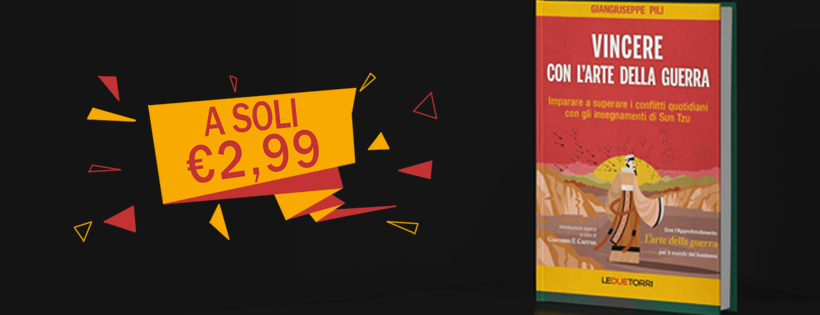

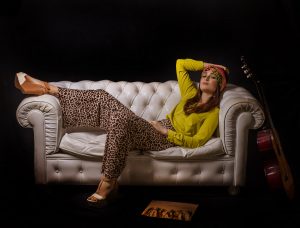
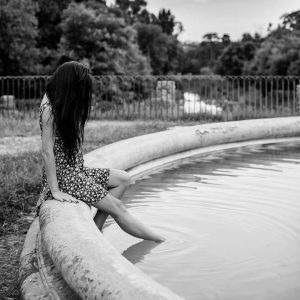
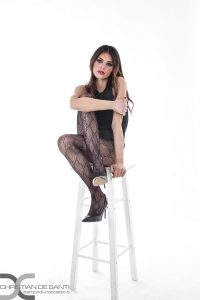
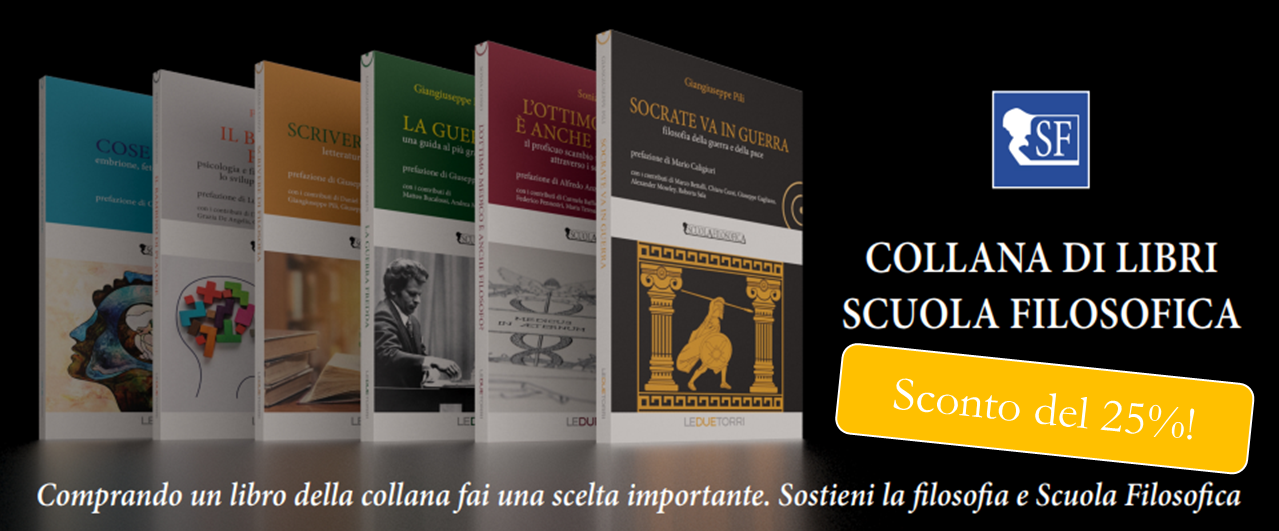

Be First to Comment